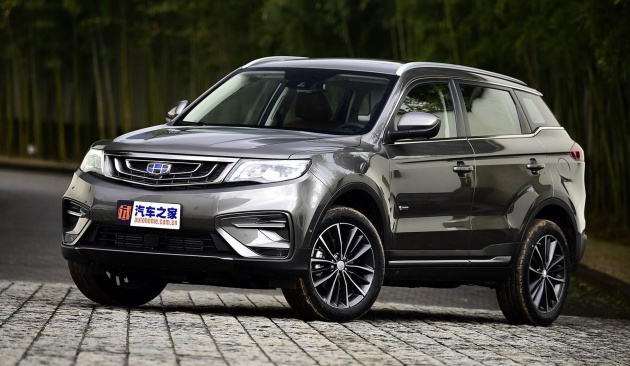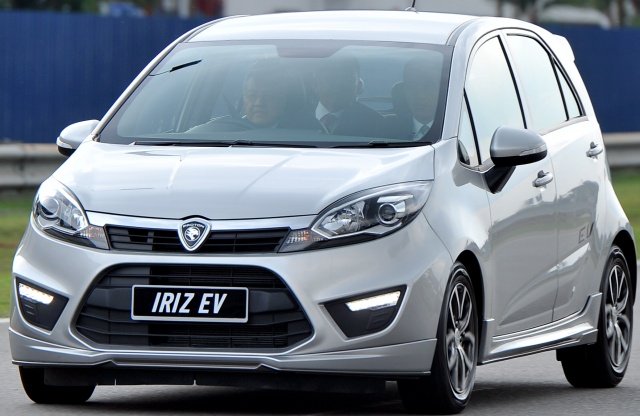(Reuters) – Elliott Management Corp renewed calls on Hyundai Motor Group last month to make structural changes, a source told Reuters, months after the U.S. activist fund helped force the South Korean automotive company to scrap a restructuring deal. FILE PHOTO: A car dealer stands in front of the logo of Hyundai Motor at its… Continue reading Elliott renews calls for Hyundai Motor revamp: source
Tag: Hyundai
UPDATE 2-Elliott renews calls for Hyundai Motor revamp – source
(Reuters) – Elliott Management Corp renewed calls on Hyundai Motor Group last month to make structural changes, a source told Reuters, months after the U.S. activist fund helped force the South Korean automotive company to scrap a restructuring deal. FILE PHOTO: A car dealer stands in front of the logo of Hyundai Motor at its… Continue reading UPDATE 2-Elliott renews calls for Hyundai Motor revamp – source
Hyundai Avante refresh shines for its practicality
By Choi Kyong-ae NAMYANGJU, South Korea, Sept. 6 (Yonhap) — Hyundai Motor Co.’s significantly redesigned Avante compact on Thursday proved it is a really suitable entry-level vehicle for everyday city driving in terms of fuel efficiency and safety features. In a 130-kilometer test drive that took two hours in Namyangju, just east of Seoul, the… Continue reading Hyundai Avante refresh shines for its practicality
Geely to build new plant in China to boost growth
Geely is planning on building a new plant in the eastern port city of Ningbo that is capable of producing 250,000 units of larger-sized vehicles annually. It expects the move to boost sales growth and help meet the goal of selling over two million vehicles by 2020, sources tell Automotive News. The new facility will… Continue reading Geely to build new plant in China to boost growth
How Self-Driving Supergroup Aurora Plans to Make Robocars Real
The Traveling Wilburys were a short-lived phenomenon. From 1988 to 1991, Bob Dylan, George Harrison, Jeff Lynne, Roy Orbison, and Tom Petty—each a star in their own right and with a robust catalog to their name—combined their talents and experiences to produce two albums. That’s 21 songs in 112 delightful minutes of music, a testament… Continue reading How Self-Driving Supergroup Aurora Plans to Make Robocars Real
Auto Consultant Lawrence Burns Dishes the Dirt on Waymo 28 Aug
Photos: Left, HarperCollins; Right: Hite Photo
Advertisement
Editor’s Picks
Waymo's Fight With Uber Might Be the First Shot in a Self-Driving Car IP War
Google Has Spent Over $1.1 Billion on Self-Driving Tech
How Google's Self-Driving Car Works
The genesis of the modern self-driving car across three Darpa challenges in the early 2000s has been well documented, here and elsewhere. Teams of universities, enthusiasts and automakers struggled to get cars to drive themselves through desert and city conditions. In the process, they kick-started the sensor, software and mapping technologies that would power today’s self-driving taxis and trucks.
A fascinating new book, “Autonomy” by Lawrence Burns, explores both the Darpa races and what happened next—in particular, how Google’s self-driving car effort, now spun out as Waymo, came to dominate the field. Burns is a long-time auto executive, having come up through the ranks at GM and spent time championing that company’s own autonomous vehicle effort, the impressive but ill-fated EN-V urban mobility concept.
Burns began working with Google’s Project Chauffeur in 2010, just as New York Times journalist John Markoff was about to reveal the program to the world. (Incidentally, the book tells us that Markoff discovered its existence through a tip from a disgruntled former safety driver). But Burns’s role actually started earlier, when he turned down a request from Urban Challenge victors Red Whittaker and Chris Urmson to fund a joint venture between GM and their Carnegie Mellon team.
Burns writes that at the time (2008), even GM, which had supported Urmson’s team in the DARPA competition, believed autonomous cars were half a century away. What’s more, the company was preoccupied with its mere survival during the Great Recession.
Fast-forward to 2010, when Google’s program, led by Darpa veteran Sebastian Thrun, suddenly realized it needed someone to bridge the gap between Silicon Valley and Detroit. “They were looking for the grey-beard auto executive to help on many different fronts,” Burns told me in a telephone interview. “They were looking for an executive that had a vision for the technology but also knew how the OEMs [car makers] and regulators work.”
Burns’s book provides a wealth of detail and anecdotes about Google’s program, both technological and social. There’s a description of how Google co-founder Larry Page recruited Thrun (and what Burns calls his “lieutenant,” maverick engineer Anthony Levandowski) to the company in the face of multi-million dollar offers from venture capitalists to work on maps, and then self-driving cars.
Where the book really shines, though, is in illustrating the complex dynamic between Thrun, Urmson, and Levandowski, the three critical figures in making robot cars a reality. “We see a lot of heroes in this story,” says Burns. “Anthony is just an extraordinarily creative guy… with unbelievable energy. [But] he was disruptive, hard to trust and unpredictable.”
Although Burns’s sympathies clearly lie with Chris Urmson, the solid, dependable Canadian, his anecdotes often depict a smart and effective group solving problems together. On one occasion, Levandowski rented dozens of cars to supercharge Google’s mapping effort. On another, engineer Dmitri Dolgov (now Waymo CTO) faced off with a police officer while testing a prototype in a Mountain View car park.
There’s great reporting around 510 Systems, Levandowski’s stealthy start-up that provided imaging units and the first self-driving car to Google. Page eventually saw the firm as a conflict of interest for Levandowski. Thrun considered making Levandowski CEO of Chauffeur, but backed off when some team members threatened to leave if that happened. Another solution would have been for Levandowski to leave Google, going back to 510 or moving to a new company. Burns said Levandowski had even wooed several key engineers to join him there—an accusation he would later face again, with the formation of Otto. Under that scheme, Urmson would’ve been named CEO of the new company, if he had gone with them.
But Urmson wanted to stay put, reports Burn. “We built this thing here,” Urmson recalls saying. “This is going to take a lot of resources to build, so [Google] seems like the right place to do it.” As it turned out, Google bought 510, placating Levandowski with a hefty bonus plan for staying in Mountain View.
The group’s first tests on a public road involved a nerve-wracking rolling barrier of normal cars driven by Google employees in front of and behind the self-driving car, for safety. There’s also a fun section where the engineers struggle to complete a list of 10 difficult self-driving scenarios presented by Larry Page in order to earn a hefty pay-out. SPOILER ALERT: They succeed, enabling Urmson to make a down payment on a house.
Burns’s reactions to the team’s antics perfectly illuminate the difference between the Detroit auto companies and Google. “I was amazed that they were testing the vehicles on public roads. No automotive company would ever, ever have done that,” he tells me.
He also marvels at what Google accomplished in its $1.1 billion Chauffeur program (first reported in Spectrum). “GM spent about the same amount developing fuel cells during my 11 years as their vice president of R&D,” Burns recalls.
But even long after Markoff’s flattering story hit newsstands, Burns says that the Google team got the cold shoulder from Detroit, with reactions including amusement, disinterest, condescension, and anger that the engineers would take such risks. “I guess we’re not working with those guys,” Burns remembers Urmson saying after a particularly patronizing meeting.
Of course, things would change in the years that followed—especially after respected Detroit auto executive John Krafcik was brought on board. But there the book draws a veil. Burns has some discussion of Waymo rivals Uber and GM-Cruise, among others, and a fair bit on the infamous Waymo vs Uber trade secrets lawsuit. But none of his sources, nor he himself, delves into Waymo’s growing list of partnerships or future plans.
The book finishes with off with financial and economic analyses of the impacts of autonomous automotive mobility services (nothing on bikes or scooters), brief treatments of some high-profile crashes, and sparse details on Chris Urmson’s latest start-up, Aurora.
Burns ends on the optimistic note that we are inevitably heading for a tipping point where cheap, safe, and reliable self-driving vehicles will dominate transportation. “There’s going to be a moment where it’s crystal clear that the value offered by the convergence of autonomous and electric vehicles with transportation services to individual people is really compelling,” he tells me. “That point is when a lot of businesses are going to go into it… and that’s when things will scale, and scale fast.”
Anyone after a less rose-tinted view will be disappointed. There is little discussion in “Autonomy” of the possibility of increased congestion as we transition to an all-autonomous future, nor any reference to concerns about security, hacking, or potential societal risks around access and employment.
“Autonomy” is also partisan, to say the least. Although the book is not an official Waymo publication, Burns continues to be employed by the company. He is also a director at self-driving truck technology company Peloton. Burns also says he gave an early copy of the manuscript to Waymo, and made some very minor corrections or redactions at its request.
But these are minor quibbles. “Autonomy” does not claim to be a scholarly history of self-driving vehicles, nor a scientific paper to help regulators craft policy. In the hands of accomplished ghost writer Christopher Shulgan, it is rip-roaring story of one team’s exploits in reinventing the motor car. Now if only Anthony Levandowski would publish his account of the same events….
“Autonomy” by Lawrence D. Burns and Christopher Shulgan is published today by Ecco Books. $27.99
Editor's note: This story was updated on 28 August 2018.
Al-Haj inks agreement with Proton to launch electric cars in Pakistan
LAHORE – Pakistani auto manufacturer Al-Haj motors has signed an agreement with Malaysian automobile giant Proton to assemble and distribute electric and eco-friendly cars in Pakistan. The agreement signing ceremony took place at Proton Motors headquarter in Kuala Lumpur and the deal is expected to bring in an investment of $200-300 million. According to the… Continue reading Al-Haj inks agreement with Proton to launch electric cars in Pakistan
Lynk&Co 03 saloon revealed: new pictures show interior
Lynk&Co’s models feature highly connected technology, so the 03 is expected to follow suit and come with large touchscreens that offer internet connectivity. The 03 could also get a share button, as introduced in the 01, that allows other users to access the car with a temporary digital key sent to their smartphone. The CMA platform is… Continue reading Lynk&Co 03 saloon revealed: new pictures show interior
2018’s diesel deaths – complete list of axed models
FCA pledged to axe all diesels from its line-up — which includes numerous SUVs and cars more commonly associated with diesel power — by 2022. For now, they’re still available, but after 2022 diesel will only be available in FCA’s commercial vehicles. Honda CR-V The new CR-V arrives soon with a number of firsts — the first time it’s been… Continue reading 2018’s diesel deaths – complete list of axed models
2018’s diesel deaths – by brand
FCA pledged to axe all diesels from its line-up — which includes numerous SUVs and cars more commonly associated with diesel power — by 2022. For now, they’re still available, but after 2022 diesel will only be available in FCA’s commercial vehicles. Honda CR-V The new CR-V arrives soon with a number of firsts — the first time it’s been… Continue reading 2018’s diesel deaths – by brand


